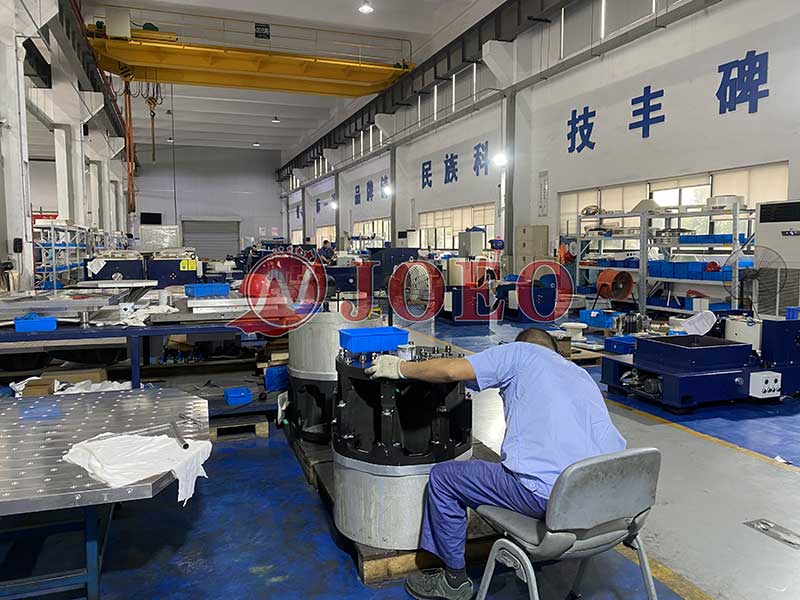Sinusoidal vibration test by exposing the measured object to a single frequency sinusoidal sound of a specified amplitude and observing the performance of the object under continuous vibration, sinusoidal vibration test can produce an acceleration sinusoidal waveform, which has a certain acceleration and displacement amplitude, and the amplitude and frequency can change or remain unchanged during the test. When the vibration frequency is kept constant, the acceleration and displacement of the object can be changed. The amplitude of acceleration or the amplitude of displacement can be kept constant or modified to change the energy level of the test.
Simple: The sinusoidal test is considered to be one of the simplest and therefore most reliable vibration tests
Visual clarity and accuracy: Sinusoidal vibration tests scan a user-set curve one frequency at a time, so a higher signal-to-noise ratio can be achieved and a clear response can be produced. This makes the sinusoidal vibration test one of the best ways to identify the resonant frequency of the test object.
If the DUT has a specific resonance and the test engineer needs to know how long it will take to cause the DUT to fail (assuming the fault is caused by excitation of a known resonance), sinusoidal testing at that particular frequency is an effective way to cause the DUT to fail.
Applications: Battery testing, electronic components, robots, automotive, etc
Important parameters: amplitude (in g, mm, m/s), frequency (in Hertz) ,Duration (expressed as time value)
Scanning rate.
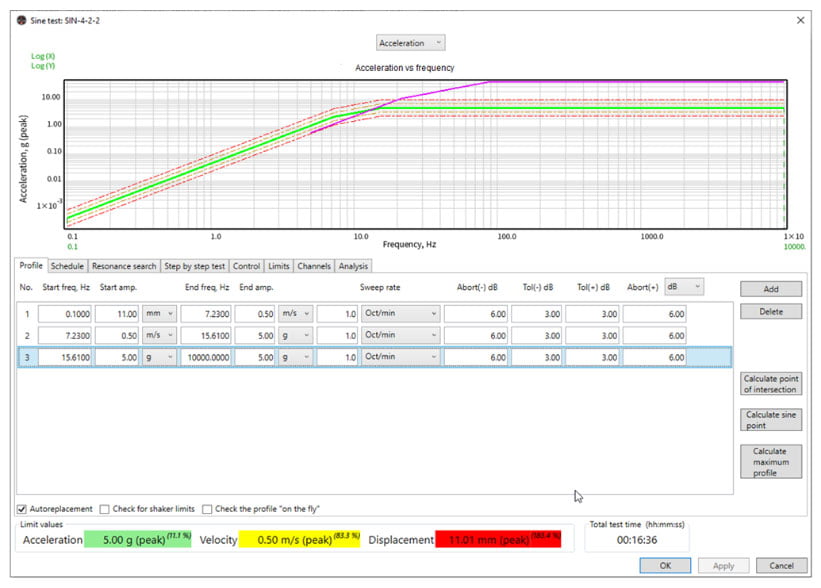
Sine dwell is the most basic form of sinusoidal testing, in which only the simplest three parameters need to be remembered:
Vibration amplitude: can be defined in terms of acceleration, velocity, or displacement values.
Vibration frequency: Specifies the frequency of the sine wave in Hz.
Duration: The duration of the sinusoidal vibration.
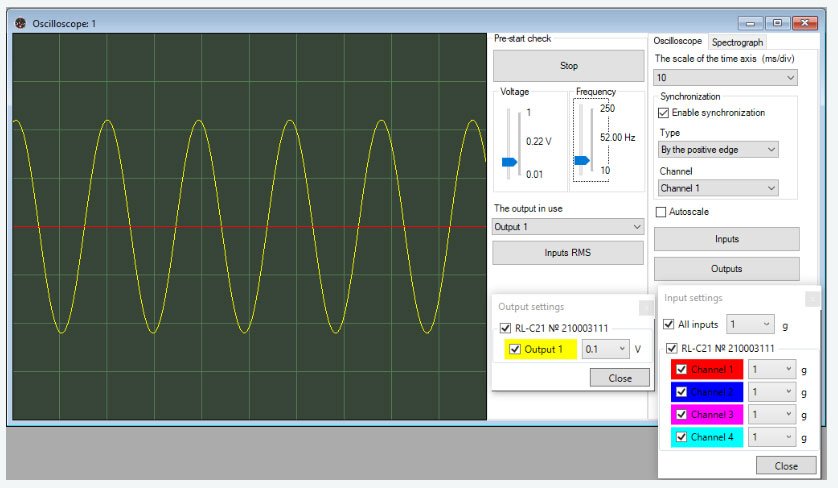
In the sinusoidal scanning test, the amplitude and frequency of the sinusoidal vibration waveform applied to the tested object are not constant, but gradually change with time. To be specific:
Compared with the fixed sinusoidal stay test, sinusoidal scan can more comprehensively understand the dynamic response characteristics of the system under test at a wide range of frequencies. The curve tracking function also makes monitoring and analysis of the entire test process more intuitive and convenient. This test method is also widely used in the field of vibration test.
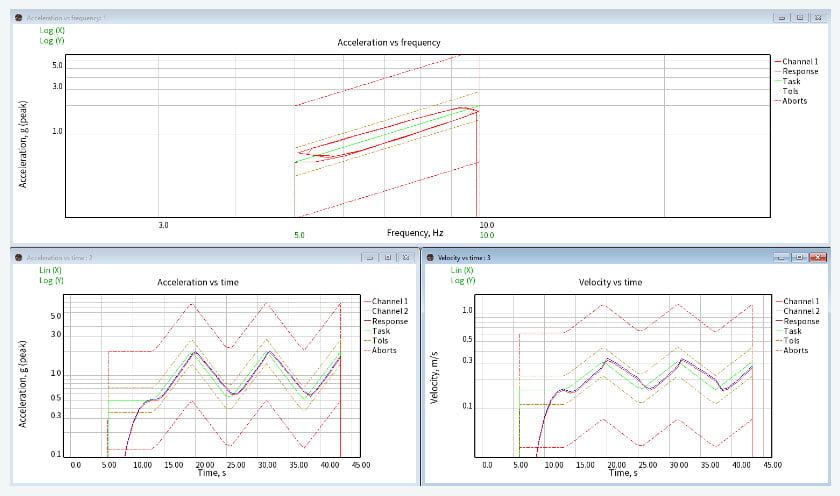
Simple sinusoidal scanning tests can help engineers quickly identify the resonance frequency of the object or structure under test. At these resonant frequencies, the system will show significant amplitude peaks, which provides important clues for engineers to discover the vulnerability of the test object.
With this critical information, engineers can design a sinusoidal vibration test plan. They can specifically target those resonant frequencies and keep the vibration system oscillating near those frequencies until the object under test is eventually damaged or reaches a given test duration.This test method can ensure that the tested object can withstand the equivalent vibration exposure in the actual use environment. By deliberately keeping vibrations close to the resonant frequency, engineers can better simulate and predict the reliability performance of the object under test in real-world application scenarios.
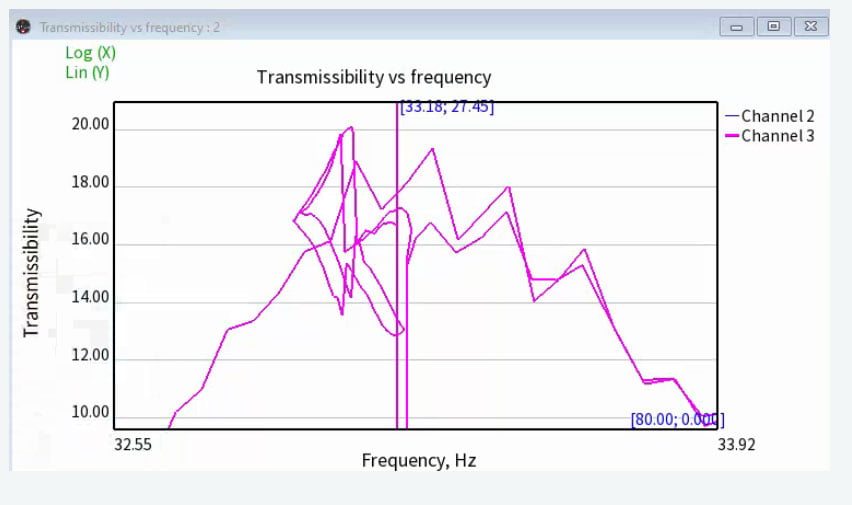
JOEO has more than 20 years of experience in the field of vibration testing, so if you need help specifying vibration testing for your product, please contact our experts immediately to discuss the specifics of your product and end-use application. We will provide you with the most efficient solution for free.
